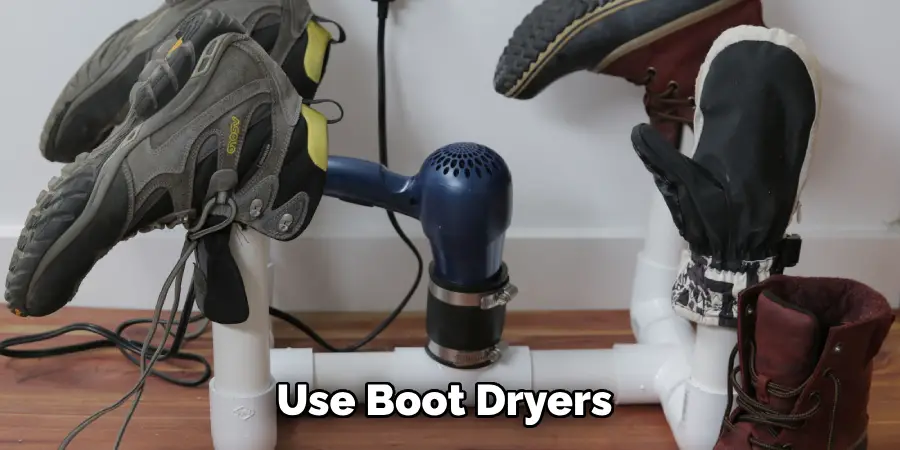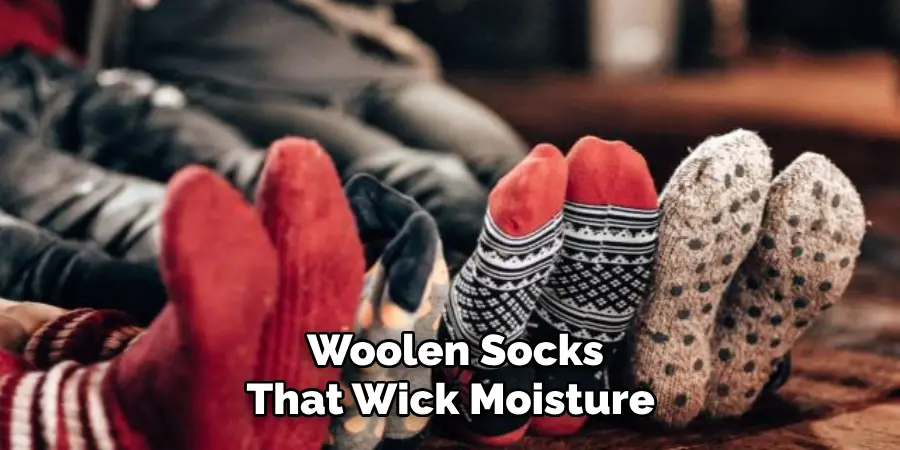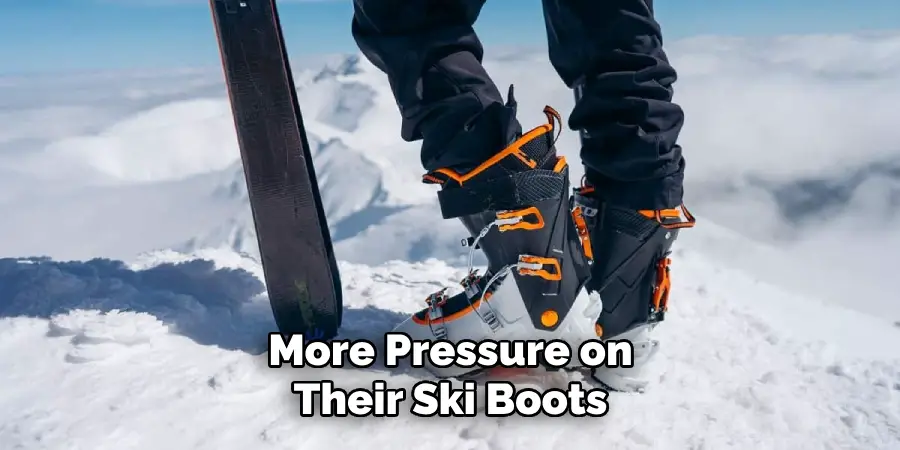Ski boots are an essential piece of equipment for any skier. They provide the necessary support and control while gliding down the slopes. However, new ski boots can often be uncomfortable and cause blisters or pain on your feet. This is why it’s important to break in your ski boots before hitting the slopes. Not only will it improve your comfort level, but it will also enhance your skiing experience.

The main objective of this document is to provide detailed information on breaking in ski boots. Ski boots are the most important equipment for a skier, as they directly affect their comfort and performance on the slopes. It is essential to have properly fitted and broken-in ski boots to fully enjoy your time on the mountain. In this blog post, You will learn in detail how to break in ski boots.
Step by Step Processes for How to Break in Ski Boots
Step 1: Inspect Your Ski Boots
When purchasing a new pair of ski boots, it’s important to thoroughly inspect them before hitting the slopes. Check for any defects or damage that may affect the overall fit and comfort of the boots. Before heading out onto the mountain, try wearing your new ski boots around the house for a few hours. This will help break them in without putting too much strain on your feet.
Step 2: Use Heat to Mold Them
Many ski shops offer heat-molding services that can help mold the boot’s liner to your specific foot shape. This can greatly improve the overall fit and make breaking in the boots easier. When you first start skiing in your new boots, take shorter trips to allow your feet to adjust and get used to the new fit. This will help prevent discomfort and blisters.
Step 3: Adjust the Buckles
Make sure to properly adjust all of the buckles on your ski boots. The correct tightness can greatly improve the comfort and support of the boots. Wearing the right socks is essential for breaking in your ski boots. Avoid wearing regular cotton socks as they can cause blisters and discomfort. Opt for moisture-wicking and padded ski socks instead.
Step 4: Loosen the Boots While Taking Breaks
If you start to feel discomfort or pressure points while skiing, take a break and loosen your boots. This will give your feet a chance to rest and prevent any long-term damage. After a day of skiing, use boot dryers to help dry out the inside of your ski boots. This will not only keep them smelling fresh but also help mold them to the shape of your foot.

Step 5: Wear Shin Guards
If you experience shin pain while breaking in your ski boots, consider wearing shin guards to help alleviate the pressure and protect your shins. Proper skiing technique can greatly affect how your ski boots feel. Make sure to lean forward and keep your weight centered over the balls of your feet for optimal comfort.
Step 6: Be Patient
Breaking in ski boots takes time and patience. Don’t rush the process or push through any discomfort as it can lead to long-term foot problems.
If you’re still experiencing discomfort after following these steps, consider getting a professional boot fitting. A ski shop expert can help make minor adjustments or suggest different boot models that may better fit your feet. With the proper techniques and patience, breaking in ski boots can greatly improve your skiing experience.
Precautions for How to Break in Ski Boots

- To comfortably break in ski boots, opt for thin, synthetic or woolen socks that wick moisture away from your feet. Avoid cotton socks as they absorb sweat and can lead to blisters.
- When breaking in new ski boots, it’s important to take things slow. Start with shorter ski sessions and gradually increase the duration as your feet get used to the boots.
- If your ski boots are too tight, try using heat to mold them to fit your feet better. You can use a hairdryer or boot heaters to warm up the liners and then put on the boots while they’re still warm for a more custom fit.
- Before hitting the slopes, take a walk around in your ski boots to help loosen them up. This will also give you a chance to spot any pressure points or areas that need extra padding.
- If your ski boots are too narrow, consider using boot stretchers to widen the shell and accommodate wider feet. Be sure to follow the instructions carefully and gradually increase the width until it feels comfortable.
- Many skiers make the mistake of over buckling their ski boots, leading to discomfort and pain. Be sure to leave some room for your feet to move and flex inside the boot.
- If you’re struggling to break in your ski boots or experiencing extreme discomfort, seek help from a professional boot fitter. They can offer personalized solutions and make adjustments to ensure the best fit for your feet.
By following these safety tips and precautions, you can break in your ski boots comfortably and enjoy a smooth skiing experience. Remember to always prioritize comfort and take things slow when it comes to breaking in new equipment.
How Often Should You Have Your Ski Boots Adjusted or Refitted?
Ski boots are an essential part of your skiing experience, and having a well-fitted pair can make all the difference. However, no matter how perfectly fitted your boots were when you bought them, they may need adjustments or refitting over time. This is especially true for new ski boots that have yet to be broken in. Here are some general guidelines to help you determine when it’s time to have your ski boots adjusted or refitted:

- If you ski frequently: Skiing often can cause the liners of your ski boots to pack out faster. This means that the foam and padding inside your boots compress and lose their shape, resulting in a looser fit. If you’re a regular skier, it’s recommended to have your ski boots checked for adjustments or refitting at least once a season.
- If you ski aggressively: Skiers who are more aggressive tend to put more pressure on their ski boots, causing them to wear out faster. This means that they may need adjustments or refitting more frequently than other skiers.
- If you experience pain or discomfort: If your ski boots start causing you pain or discomfort, it’s a sign that something is not right and needs to be addressed. It could be due to worn-out liners, footbeds, or even changes in your feet or body. It’s essential to have your ski boots checked and adjusted or refitted as needed to avoid unnecessary discomfort and injuries.
- If you’ve lost or gained weight: Significant changes in your weight can affect the fit of your ski boots. If you’ve lost or gained a considerable amount of weight, it’s best to have them checked and adjusted accordingly.
It’s important to note that even if none of the above apply to you, it’s still recommended to have your ski boots checked and adjusted or refitted every few seasons. This is because the materials used in ski boots can break down over time, affecting their fit and performance.
What Are Some Common Mistakes When Breaking in Ski Boots?
Ski boots are an essential part of any ski gear, as they provide the support and control necessary for a great skiing experience. However, breaking in new ski boots can be a daunting task for many skiers. While it may seem like a simple process, there are common mistakes that can cause discomfort and even injury on the slopes. If you’re struggling to break in your ski boots, here are some of the most common mistakes you should avoid:
1. Not Wearing Them Enough Before Your Ski Trip
One of the biggest mistakes skiers make is not wearing their new ski boots enough before heading out on a skiing trip. This often happens because people are eager to try out their new gear and don’t want to wait any longer. However, it’s important to wear your ski boots for a few hours at home or on a shorter outing before hitting the slopes. This will give your feet and the boots time to adjust to each other, making for a more comfortable fit.
2. Not Adjusting the Fit Properly
Ski boots come with various adjustments, such as buckles and straps, that allow you to customize the fit for your feet. Unfortunately, many skiers make the mistake of not adjusting these properly. This can lead to discomfort and pain while skiing, as well as a lack of control over your skis. Make sure to take the time to adjust each buckle and strap according to your foot shape and size.
3. Skipping Socks or Wearing the Wrong Ones
The type of socks you wear with your ski boots can make a big difference in how they fit and feel. Thin, moisture-wicking ski socks are the best choice for skiing as they provide warmth without adding extra bulk that can cause discomfort or tightness in the boot. On the other hand, regular thick socks can lead to sweaty feet and blisters.
4. Tightening the Boots Too Much
Many skiers believe that the tighter their boots are, the better control they will have over their skis. However, this is not always true. Tightening your ski boots too much can actually restrict blood flow to your feet and cause pain and numbness. Make sure to leave some room for your feet to move and flex inside the boot. You should be able to wiggle your toes comfortably.
5. Not Using Boot Warmers
Breaking in ski boots can take some time, and it’s common for skiers to experience discomfort and pain during this process. One way to make the breaking-in period more comfortable is by using boot warmers. These battery-powered devices warm up the inside of your boots, making them more pliable and easier to mold to your feet.

By avoiding these common mistakes, you can ensure that your ski boots are properly broken in for a comfortable and enjoyable skiing experience. Remember, taking the time to properly break in your ski boots will pay off in the long run, as it will prevent discomfort and pain on the slopes.
Conclusion
In conclusion, breaking in your ski boots is an important step to ensure maximum comfort and performance on the slopes. By following these simple steps, you can break in your ski boots effectively and avoid any unnecessary discomfort or pain while skiing.
Remember to start off by choosing the right size and fit for your feet. This will prevent any major issues when trying to break them in. Additionally, don’t be afraid to adjust the buckles and straps to find the perfect fit. Once you have your boots on, take some time to walk around in them before hitting the slopes.
This will allow your feet to get used to the new pressure points and help loosen up the material. I hope this article has been beneficial for learning how to break in ski boots. Make Sure the precautionary measures are followed chronologically.

